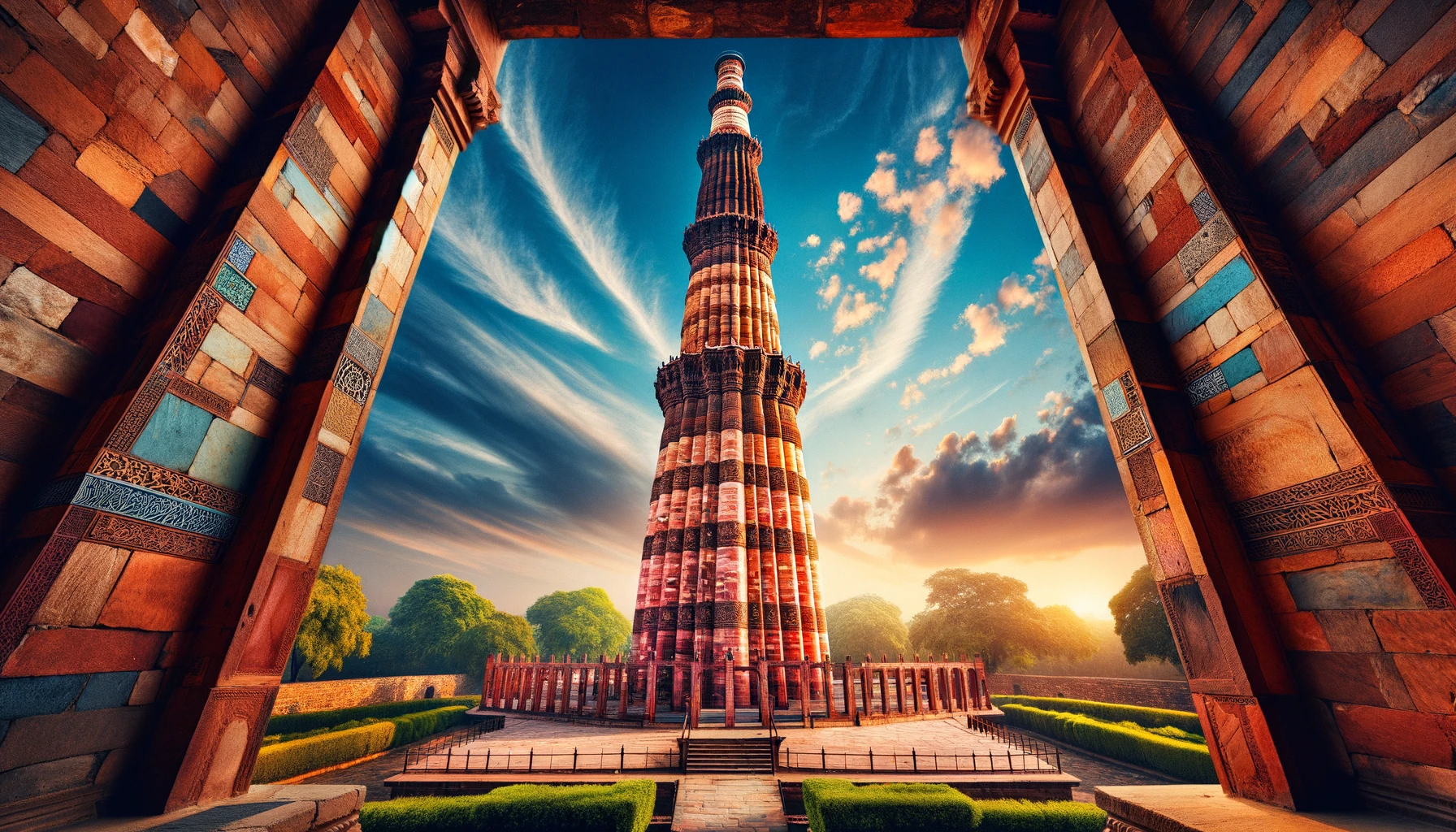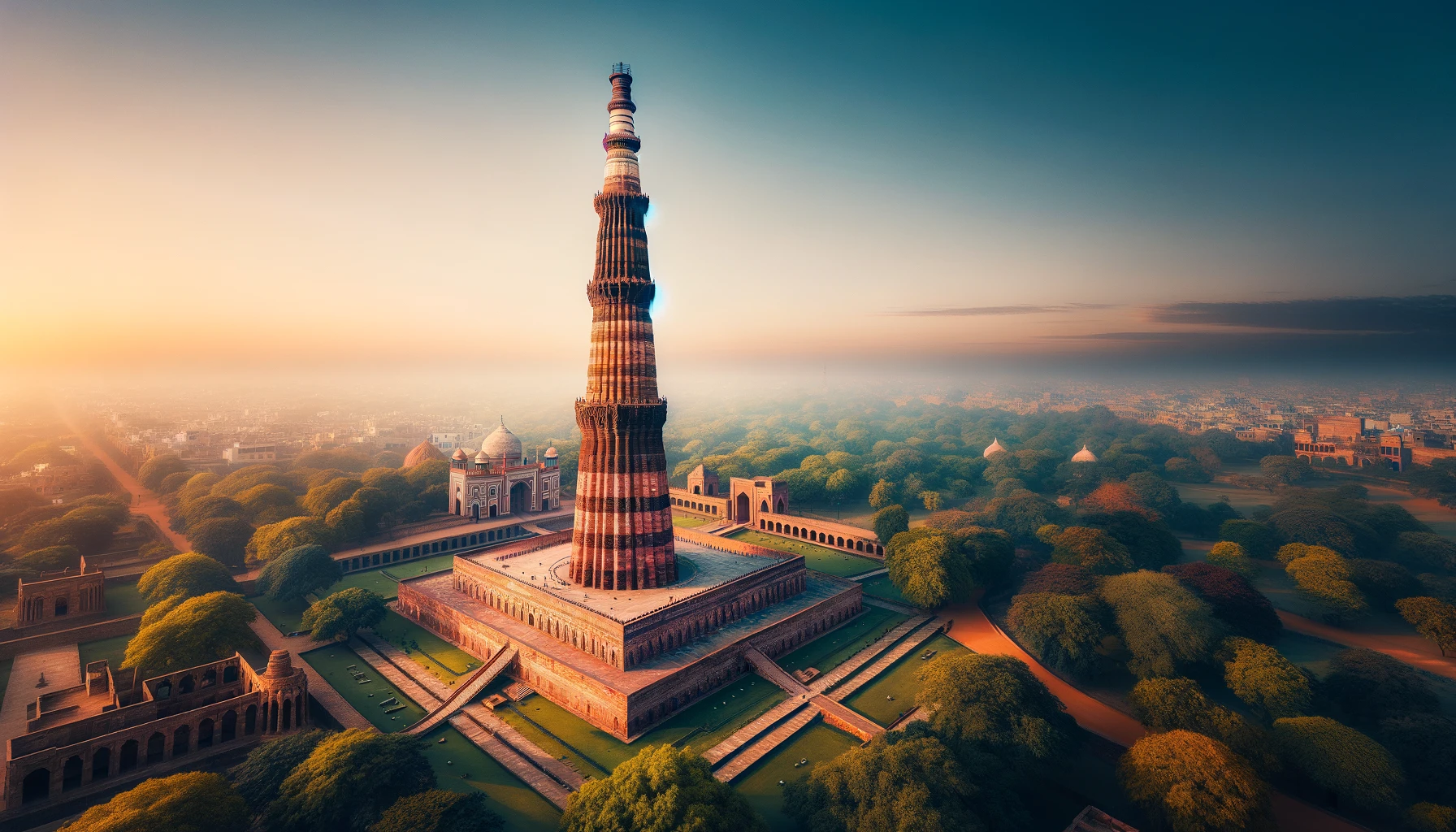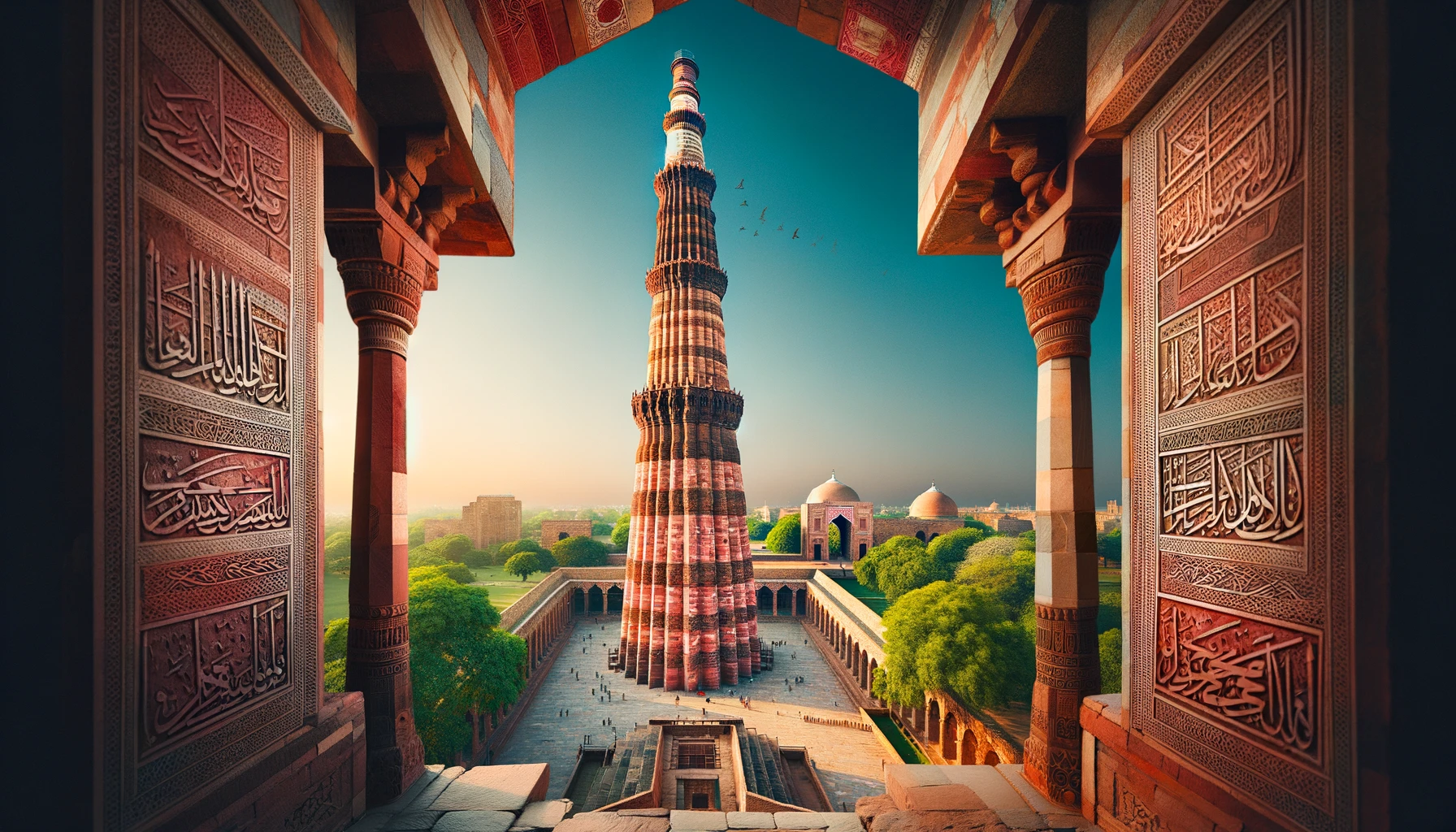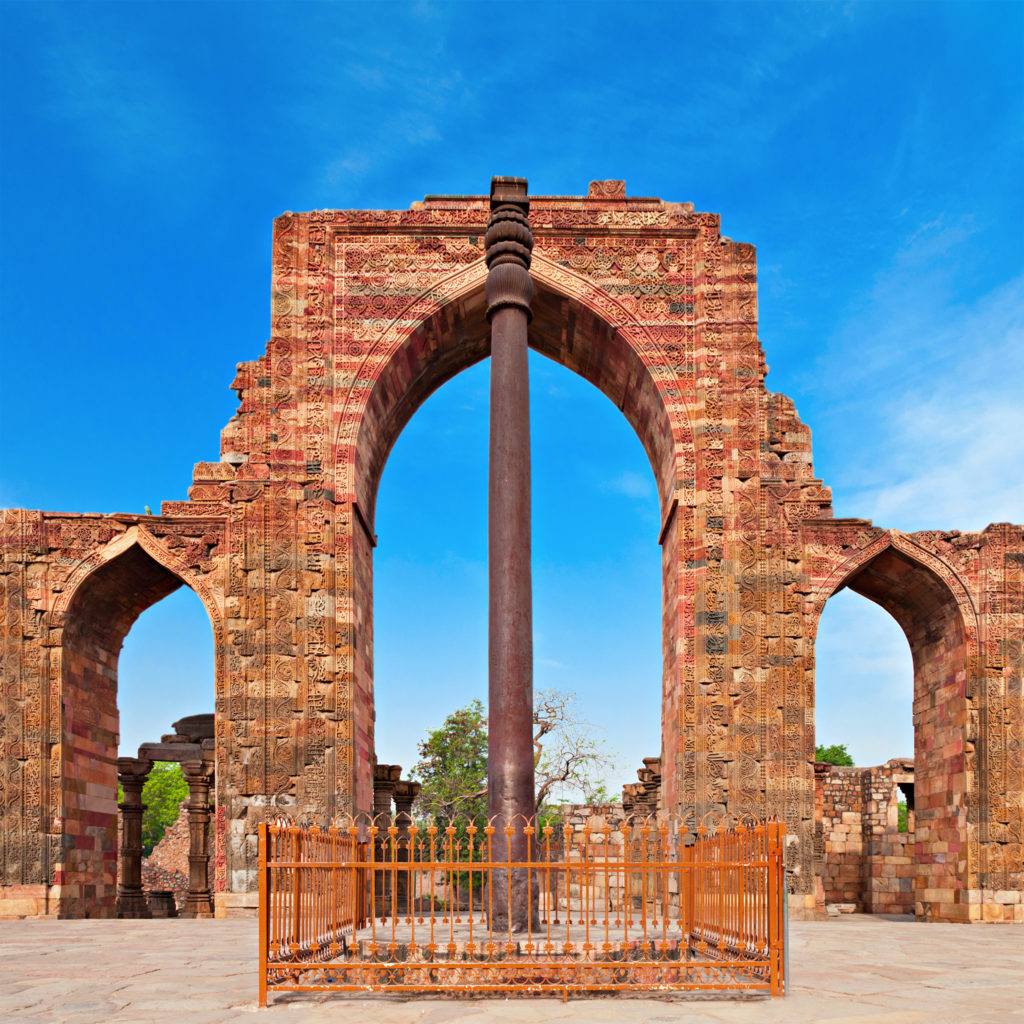Qutub Minar is a minaret, or a victory tower located in Qutub complex, a UNESCO World Heritage Site in Delhi’s Mehrauli area. Qutub Minar timings With the height of 72.5 metres (238 ft), History of Qutub Minar is the second tallest monument of Delhi. Its construction was start in 1192 by Qutb Ud-Din-Aibak, founder of Delhi Sultanate after he defeated the last Hindu Ruler of Delhi. He construct the basement, after which the construction was take over by his son-in-law and successor Iltutmish who construct three additional stories. How to Visit Qutub Minar The fourth and fifth storeys were Architecture of Qutub Minar built by Firoz Shah Tuglak.
History of Qutub Minar
- Qutub Minar was built in 1192 by Qutb-ud-din Aibak, the first ruler of the Delhi Sultanate to mark his victory against the last Hindu empire of Delhi. It is not sure whether the minaret was a dedication to a Sufi saint, Qutbuddin Bakhtiar Kaki or not. Aibak built only the basement of the monument, and three more storeys were add by his successor, Iltutmish.
- Unfortunately, this historical monument faced a few natural disasters. In 1369 AD, severe lightning struck the top storey of the minaret, damaging it completely. Then, Sultan Firuz Shah Tughlaq rebuilt the monument and added another storey made of marble and red sandstone. Again, in 1505, an earthquake ruin the minaret. Sikandar Lodi, who was the Sultan at that time reconstructed the top two storeys of the minaret with marbles.
- That was not the end. The monument was hit yet again by a major earthquake on September 1, 1803. It was reduce to wreck after which Major Robert Smith of the British Indian Army rebuilt it in 1828. He also installed a cupola atop the tower. However, in 1848, it was uninstall on the command of the then Governor-General of India, Henry Hardinge. Today, that cupola is on the ground floor to the east of History of Qutub Minar.

About
Qutub Minar is a tower that stands tall in the heart of Delhi. It was built by the first Muslim ruler of Delhi and is believed to be one of the tallest brick minarets in the world. The tower is 73 meters high and made of red sandstone and marble.
The towering minaret was built with red sandstone and marble and had a spiral staircase made of red sandstone on its exterior. The top floor contains chambers for prayer, as well as a mosque on the second floor. At each corner of the tower were two small towers called guldaste that guards used to keep watch from above; these have since been removed from the structure due to safety concerns.
The Qutub Minar is considered one of Delhi’s most important landmarks because it provides insight into both Islamic architecture and medieval Indian history; additionally, it has been used as an inspiration by many other artists throughout history, including Shah Jahan, Qutub Minar timings who built the Taj Mahal based off this design.

Facts about Qutub Minar
The Qutub Minar is one of India’s most famous monuments and one of the world’s tallest free-standing towers. But did you know that…
- It was built by Qutb-ud-din Aibak, an enslaved Turkish who became Sultan of Delhi.
- The minaret was about 5 stories high—but the top two stories have since collapsed.
- The tower has been repair frequently due to earthquakes and other natural disasters.
- Legend has it that its uppermost story was suppose to be made from gold when it was first built.
- Qutub Minar was built from red sandstone and cover with decorative Indo-Islamic carvings and verses from the Quran.
Things to do in Qutub Minar
If you’re looking for things to do near Qutub Minar, we’ve got you covered!
The interior of this tower is also worth checking out—it contains intricate carvings and beautiful designs made by skilled craftsmen over 900 years ago. Some parts of these carvings have been damaged by weather over time, but they’re still beautiful to look at.
The exterior design structure was built using different bricks that were put together in different ways depending History of Qutub Minar on what kind of structure they would be used for (for example, How to Visit Qutub Minar some parts were made using only red bricks while others were built using both red and yellow).
Here are some of the different things you can do when you visit:
- Visit the Tombs of Qutb-ud-din Aybak and Shamsi Badruz Jahan Begum
- See the Dome of Asaf Khan’s Tomb
- See the ruins of Lal Kot Fort and Humayun’s Tomb
- See the Royal Baths (hammam) inside the complex.

Qutub Minar Highlights
Quwwat-ul-Islam Mosque
Locate within the Qutub Minar complex at Mehrauli in Delhi, Quwwat-ul-Islam Mosque (translating to ‘Might of Islam’) was built by the Mamluk ruler Qutub-ud-din Aibak. Yet another feather in the cap of Delhi, the monument is the first mosque to be built in the city after the Islamic conquest of India and is know as a celebration of the Muslim Rule. Also known as Jami Masjid, the construction of the mosque began in 1193 AD; and the ancient mausoleum is also the oldest surviving testament of the Ghorids architecture in the Indian subcontinent. Subsequent additions were made to the monument later, during the reigns of Iltutmish and Alauddin Khilji. Initially, the idea of the mosque was conceive as a stand-alone structure but later, Qutub Minar was construct along-side simultaneously as a ‘Minar of Jami Masjid” with the idea for the priest to perform azaan- call-out for namaz.

Alai Darwaza
It is the main gateway from the southern side of the Quwwat-ul-Islam Mosque. Built by the second Ala-ud-din Khilji in 1311 AD, it is an important structure of Delhi. It has domes decorated with red How to Visit Qutub Minar sandstone and white marbles.

Iron Pillar
Iron Pillar is one of the many mysterious monuments of wonder present in Delhi- the capital of India. Located within the Qutub Minar timings complex in Mehrauli area of New Delhi, the Iron Pillar has been posing as one of the foremost metallurgical curiosities of the world due to its prowess to not exhibit a speck of rust despite being thousands of years old. Made with 98% wrought iron and withstanding over 1600 years of withering, the pillar still stands sturdy and resists corrosion. However, a few studies in the recent times suggest that the incorrigible nature of the monument is due to a thin layer of crystalline iron hydrogen phosphate hydrate forming on the high-phosphorus-content iron, which serves to protect it from the effects of the humid climate and weather conditions.

Alai Minar
Among the many historical monuments present within the Qutub Minar complex, History of Qutub Minar Alai Minar stands apart as it has left incomplete. The construction was start by the Ilbari ruler Alauddin Khilji as a project to build a Minar higher than the Qutub Minar. The ruler had high ambitions and want to be credit for many monuments of grandeur and splendour. After winning the Deccan war, he indulge in making modifications to the famous Quwwat-ul-Islam mosque within the same complex.
Once the mosque was double in size, Khilji proceeded to construct the highest tower as a mark of his prowess and victory. However, the Minar was left incomplete as the king died in 1316 AD, How to Visit Qutub Minar very soon after the construction of the tower began. The complete description of the king’s intentions and the construction of the Minar is mention in Amir Khusro’s book ‘Tarikh-e-Alai’.

Tomb of Adham Khan
Adham Khan’s Tomb located in the North of Qutub Minar is a 16th-century tomb of Adham Khan. He was a general of the Mughal Emperor Akbar.
Qutub Festival
Architecture of Qutub Minar
- The incredible Qutub Minar soars to a height of 240 ft. with a diameter of 14.3 m at the base and 2.7 m at the top. The spiral staircase consisting of 379 stairs takes one to the top of the monument. It also tilts a little from 65 m above the ground level. The five-storey building has built with red sandstone and marble.
- Every floor has a protruding balcony surrounding the minaret and support by corbels. It is a classic example of Indo-Islamic architecture. Architecture of Qutub Minar With the difference in the architectural styles and the materials used in construction, it is apparent that the tower was construct over the years by different rulers.
- The first three storeys are made of red stone and are relatively pale. The fourth one is white as it is made up of marble. Qutub Minar timings The last storey is made of sandstone. Architecture of Qutub Minar Verses from the Quran can be see engrave on the minaret with other inscriptions of Parso-Arabic and Nagari characters.
Location
The Qutub Minar is located in Mehrauli, in South Delhi. This neighborhood is about 40 minutes south of the Connaught Place city center. The closest Metro train station is Qutub Minar on the Yellow Line. It’s about 20 minutes’ walk from there to the monument. The distance can be cover on foot during the cooler winter months. In summer, you’ll want to take an auto rickshaw (about 50 rupees), bus (5 rupees) or taxi though.
How to Visit Qutub Minar
- The Qutub Minar complex is open daily from sunrise until sunset. The best months to visit are between November and March, while it’s cool and dry, with February being ideal. The complex does get crowd during the day, and especially on weekends. Hence, those who arrive early in the morning will not only get reward with the monument being illuminate sun’s first rays but also relative peace.
- Ticket prices increased in 2018 and a discount is provided on cashless payment. Cash tickets now cost 40 rupees for Indians, or 35 rupees cashless. Foreigners pay 600 rupees cash, or 550 rupees cashless. Children under 15 years of age can enter for free. The ticket counter is situate across the road from the complex’s entrance. Indians may have to wait up to an hour to serve during busy times. To avoid this, it’s possible to buy tickets online. Fortunately, there’s a separate line dedicated counter for foreigners, which reduces waiting time.
- You’ll find toilets, parking and a baggage counter near the ticket counter. Do note that food isn’t allow inside the Qutub Minar complex.
- Authorized tourist guides can be hire at the complex, but they narrate varied and often concocted tales. Many visitors choose to rent inexpensive audio guides instead and explore at leisure. Alternatively, a handy free audio guide app is available for download. Boards with information, Qutub Minar timings including a map. Architecture of Qutub Minar is also strategically place at key sites throughout the complex. If you’re interest in history, allow a couple of hours to see everything.
Travel tips for visiting Qutub Minar
- Travel light. There are no lockers at the Qutub Minar, so you’ll need to carry all your belongings. Avoid robbery by not bringing valuable things.
- Wear comfortable shoes. The Qutub Minar is a steep climb; if you’re not use to exercising regularly, it may hard on your knees and ankles.
- Bring a water bottle and some snacks. The queues can be long, and there’s nowhere to buy food inside the complex of structures; it’s better to have your provisions in case you get hungry or thirsty before your turn comes up!
- The best time to visit Qutub Minar is between October and March.
- To avoid the crowd, visit during the weekdays. Avoid weekends & holidays.
Qutub Minar timings and entry fee
The Qutub Minar timings say it is open from 9:00 am-5:00 pm daily. If you’d like to visit the Qutub Minar timings, History of Qutub Minar your best bet is to go during off-peak hours when there won’t be many people around (think early morning or late evening).
Qutub Minar Tickets for entry into the complex are INR 30 for Indians. Still, History of Qutub Minar timings there is an additional fee for foreigners How to Visit Qutub Minar inside the complex with an entry fee of INR 550.
- Do be aware that security guards may approach you and offer to take your photo. They will Architecture of Qutub Minar expect payment for doing so but they know places for some great shots that you probably won’t have thought of.


